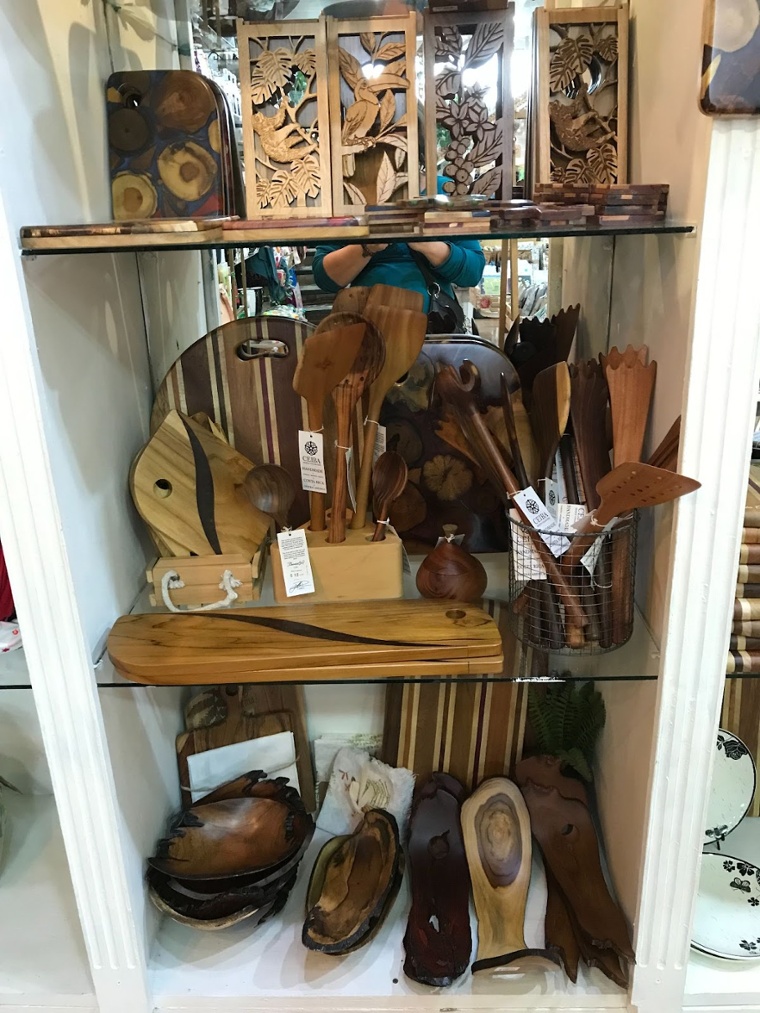Protecting the Heart of Monteverde
.jpg)
We often talk about how important the forests are to the health and welfare of the planet, and about how much work goes into their preservation and care, but what many people don’t understand- at least until you take a tour- is that it really is a labor of love.In many tourist destinations in North America, guide jobs are given to students as part-time jobs, and enthusiasm may not always be a prerequisite to accomplishing their tasks. Not so in Costa Rica… here it is a highly respected and time-honored career, and it’s not easy.
To become a guide, you must complete what amounts to a college degree. Depending on the type of guide you aspire to be, this can take 2-4 years of study, and that makes sense when you think about how biodiverse the country is.
They are then tested and certified by the Costarricense de Turismo, also known as the ICT, and are then registered under one of four categories: general guide, local guide (which is specific to one geographic area), adventure guide, and naturalist guide.
When you go on a tour with a guide, you aren’t just paying for someone to walk you along the right path and haul around a scope so you can get better pictures. You are giving yourself access to a wealth of knowledge and understanding that will help you see AND understand the inner workings of the local ecosystem. Guides will have in-depth knowledge about the history of the park itself, but they also know about the interactions between the animals, the flora and fauna, and the planet.
.jpg?width=800&height=480&name=Monteverde%20CR%20(10).jpg)
A Little Side Story
To truly understand what I mean, I want to tell you about an experience I had on my very first guided tour. We hadn’t even started the tour when it happened. We were standing by the gift shops, milling around and waiting for the rest of the group to come out of the bathrooms when our guide Oscar stopped what he was doing and went silent.
Then he put down his scope and wandered over to a grouping of trees about 30 feet away. I watched him circle the tree for a minute or two, then he walked back, picked up his scope, and trained it on one of the trees in the grouping. He then stepped back and waved us over to look. The scope showed a tiny little green snake curled up and sleeping in the crotch of the tree. It looked to be about the size of a grapefruit in total.
Amazed, I asked Oscar (our guide extraordinaire) how on earth he could have spotted a tiny green snake from that distance amidst a bunch of green leaves. He said, “The birds told me he was there.”

“What???” He smiled at me and explained that the birds make a certain type of chirp when there is danger so that they can warn the other birds. He recognized the chirp and knew something was there, and that was why he had walked over to the tree to look.
I still don’t know how he spotted the little snake. The experience really opened my eyes to the incredible resource that a trained guide can be on a hike. I consider myself brilliant on the odd occasion when I can identify a tropical bird by its call, but this man not only knows what bird it is- he knows what the various noises mean!
That, my friends, is why today’s article is about the heart of Monteverde, the guides who help protect and care for the forests that they love and everything in it. These amazing people connect us to the intricacies of an unfamiliar and exotic world and help us understand what an impact this little world has on our big one.
To learn more, I contacted the Children’s Eternal Rainforest Reserve (aka the BEN) and asked them to put me in touch with a guide so I could ask them about their job, and why it’s so important. Here is what I learned. (The answers have been translated from Spanish.)
The Interview With Guillermo
Questions:
Ocotea Team: Hi, can you give us your name and tell us a little about yourself?
Guide Gullermo: My name is Guillermo Vargas Prendas, and I am from a small town Monte de los Olivos very close to Monteverde. I grew up on a farm owned by my family dedicated to dairy farming, but a good part of the farm is forested, so birds and mammals are frequently observed.
What inspired you to become a forest guide?
My love for wild animals. I love plants and birds and the most beautiful thing for me is being able to share with people from all over the world how beautiful my country is. Also with respect to economics, it is a well-paid job.
What is a typical day like for you?
Breakfast very early, I travel for 30 minutes by motorcycle to the office, with the driver we go to the hotel for the clients and we go to one of the reserves in Monteverde. Often, after the tour, the clients want me to accompany them for lunch. Sometimes I have another tour at noon, and a night tour, and return home late at night.
Is there a part of your job that you are most passionate about? Why?
I am passionate about plants because they are always there and have many themes that can be developed. I also like the history of Costa Rica and Monteverde, and the conservation processes that we have had in the last 40 years.
.jpg?width=800&height=480&name=Monteverde%20CR%20(9).jpg)
I understand that the training involved to become a guide is intense. How long was your training?
In my case, it took me almost 4 years to be able to obtain the 2 licenses. I have certificates as a General Tourist Guide and Specialized Naturalist Guide.
You obviously love the forest, but another important part of your job is to advocate for the preservation of the forest and to educate tourists about its importance to the preservation of the planet. If you could teach visitors just one thing- what would it be?
The most important thing that every person should know is that it does not matter where they come from. The forests of Central and South America are the lungs of the whole world and if we do not protect them, the earth would become inhospitable due to global warming.
Nature is unpredictable. Can you share the most exciting experience you have had in the forest? (Sorry, this is not a ‘nice’ story, but the natural world is made up of predators- and prey.)
On a night walk in the Children's Eternal Forest, I heard some very loud screams when I approached the place. The screams were from a kinkajou that was being strangled by a boa snake. They fell from a height of 3 meters to the ground. I, along with the customers, could see how the boa ate the kinkajou.
.jpg?width=800&height=480&name=Monteverde%20CR%20(5).jpg)
Can you explain the term keystone species to me?
It is a species of plant or mammal that have great importance in maintaining the ecological balance in an ecosystem.
How many keystone species live in Monteverde’s reserves?
I don't have an exact number, but the most important are the felines that we fear, 6 of the varieties of Lauraceae of which we have more than 90 species, and a few birds.
.jpg?width=800&height=480&name=Monteverde%20CR%20(6).jpg)
What, do you think, is the best way for visitors to do their part to support the reserve?
I think that they can show support with the visit, payment of tickets and tour, and the purchase of souvenirs from the reserve brand. And if somehow we could have positive comments from each visitor on social networks, it is a form of marketing today, it would be a way to collaborate with the reserve.
Showing Support
Guillermo is right. Social media is a powerful tool. It can share information and garner support from thousands of people across the globe. I hope that this blog and others that are on the Ocotea Boutique Hotel’s site make it into the inboxes of people who understand how important the forests of Monteverde are and that they share it with friends.
Because together, we can help the protectors of the forest like Guillermo, and the other conservationists who are doing their part to keep the forests healthy and protect the planet from global warming.
If you would like to do your bit to support the Children’s Eternal Rainforest Reserve, You can send a cash donation here or show your support by throwing on your hiking shoes, grabbing a camera, and visiting the park yourself. Personally, I think that’s way more fun. Click here to book your tour.





